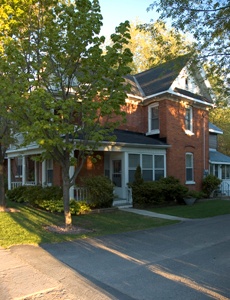 As a property owner, you should be aware of not only the inside of your rental unit, but also the exterior. Sometimes landlords forget to keep an eye on the exterior unless they are shoveling snow or raking leaves. Tree trimming is a very important task to keep up with due to the fact that tree branches can cause danger. They can damage structure, hit utility lines, or hurt a passing pedestrian. These are a few tips for landlords to be conscious of the necessity of tree trimming on their rental property.
As a property owner, you should be aware of not only the inside of your rental unit, but also the exterior. Sometimes landlords forget to keep an eye on the exterior unless they are shoveling snow or raking leaves. Tree trimming is a very important task to keep up with due to the fact that tree branches can cause danger. They can damage structure, hit utility lines, or hurt a passing pedestrian. These are a few tips for landlords to be conscious of the necessity of tree trimming on their rental property.
When should I trim the trees?
Landlords should be aware of the times when tree trimming is needed. If branches become a safety hazard by growing low over a driveway or sidewalk, definitely trim them. If the branches appear diseased or damaged, you should trim them.
Other instances would be if branches are so dense that's its preventing sun and air, if the growth is sparse on just one side of the tree, if the branches are rubbing each other damaging the tree, or if growth appears to be weakening the structure of the tree. Make sure you only do this in the late winter or early spring, rather than in the extreme cold or heat.
Shouldn't the tenant do it?
Most times a lease contract isn't going to state tree trimming responsibilities. Unless its specifically stated in the lease, it's legally and financially the landlord's responsibility. It's also considered a maintenance issue which is also the landlord's responsibility, so tenants should not be handling this.
Landlords can handle trimming themselves if it's a small tree, but it would be wise for a professional team to come out for any large trees since they have the proper tools and safety equipment.
While tree trimming could be forgotten in the maintenance responsibilities of a landlord, they should always be aware of this need and ask their tenants to call if they notice any safety concerns with the trees at the property.
